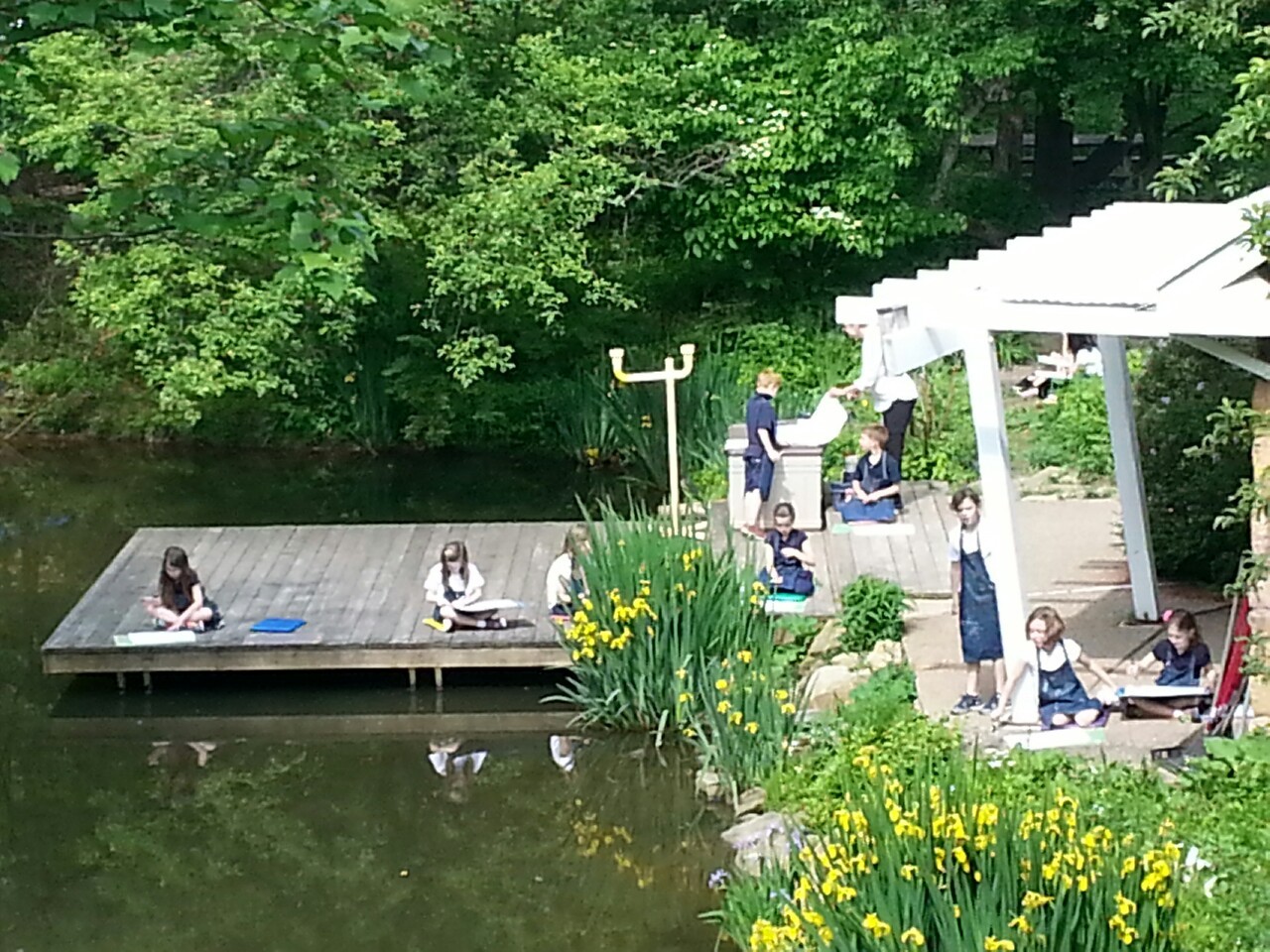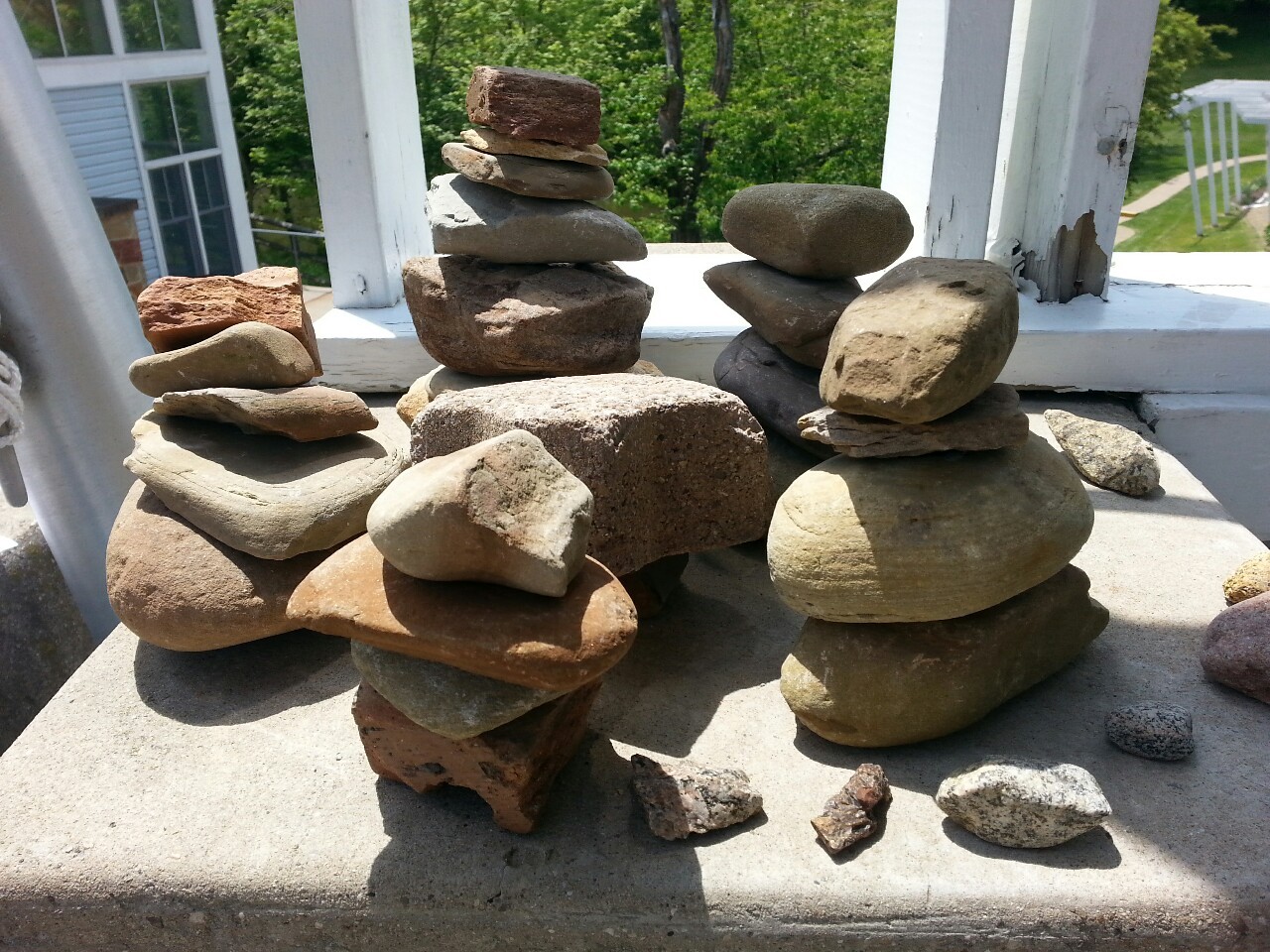A tiny wooden house has
moved into our space, but it’s not filled with people … it’s filled
with books! The North Hills Campus at WT is now host to a
nationally-registered Little Free Library.
Our library joins thousands of small book exchanges around the globe
that share books, bring people together, and create a community of
readers. The structure is conveniently located on the side porch of the
farmhouse and was graciously built and donated by the Iarrapino Family.
Their generosity helps make the love of reading accessible to all
members of our community. Feel free to visit our library, take a book,
and share your favorite stories with others.
Science - Heather Capezzuti
It all began on a sunny September morning. My Kindergarten scientists and I ventured out toward the Northbound trail in search of sounds in nature. We had been learning about what scientists do and how scientists search for evidence to find out about how things work. Our senses are very special tools that scientists use to make observations and interact with their surroundings. That day we were focusing on our sense of hearing.
We found a special spot in the woods to sit alone and listen quietly for a few minutes. We closed our eyes and counted the number of different sounds that we heard. We imagined the kinds of animals that might be making those sounds. Each child then began to compose a nature song by writing a letter or drawing a symbol to represent each sound on an index card. The ideas for this nature lesson were inspired by The Earthkeepers Program at the McKeever Environmental Education Center and Joseph Bharat Cornell’s book, Sharing Nature with Children. Needless to say, all of us were very excited to share our nature songs with Mrs. Hanczar and Mrs. Ruiz once we returned to the classroom.
Music- Cheri Hanczar
We had a discussion of the outdoor science lesson using the students’ note cards that they created from the sounds of nature. This built upon the sense of hearing, and now the students had a visual. The next step consisted of creating instrumentation (choosing instruments to represent the nature sounds and animals that they had observed in science class) for musical notation of a composition, using quarter notes, eighth notes, quarter rests, and whole notes in a 4/4 time signature. The students created a composition using musical form, including an introduction and layering the different instruments. They also learned where a composer writes his title and name for a personal composition. They were amazed that they had themselves become composers!
Dance- Gina Ruiz
To expand the lesson to dance, the students brainstormed ideas of movement that would express the sounds they heard in nature from science and the songs they had created in music. Because they had notated the sounds on paper in science and transformed what they heard and wrote into their own composition in music, they could draw from past experience to put all of this information they had been working on into dance. In keeping with the nature theme, we went up to the open field. They were excited to be able to choreograph their own dance to the music they had created.
In small groups, some students had the job of making the sounds with their instruments, some made the nature sounds with their voices, and some expressed the sounds with movement. The groups rotated so that each child had a turn to do each part.
Technology-Kate Weber
The students were able to view their performance and enjoyed watching themselves through pictures and video. They shared their experiences with other students and wanted to perform for others. Their excitement prompted expanding this lesson to other classes.
All students were proud of their composition, and other classes wanted to enjoy same experience.
Mourning Doves raise three or more broods in a single breeding season. Both parents build a flimsy platform nest of twigs located from 5 to 25 feet up in a tree or bush. Two white eggs hatch in about 14 - 16 days. One egg is laid in the evening, and the second on the next morning.
This summer a Mourning Dove couple built one of those flimsy platform nests on our covered deck. The entire family enjoyed watching the mother bird sit for hours on end until one day we noticed two wobbly heads poke out from behind her. We were thrilled to watch them grow quickly. Eventually, the babies were too big for mom to sit with them, so they looked at us alone with alert eyes. Later that day, my son noticed that they were completely gone. We celebrated at dinner and soon forgot to look up at the nest when watching the sunset or watering plants.
A few weeks later, my husband commented that the adults seemed to be building the nest up again. We had no idea that Mourning Doves produced more than one brood, but we were all delighted to see the mother sitting in her spot as she awaited the new hatchlings. The next two babies did not fare as well when it came time to leave the nest. Unfortunately, my husband scared them out of the nest too early. He fretted over what happened to them, while trying to remain optimistic.
Well, lo and behold, round three! As the days were growing shorter and the leaves began to change color, a third set of baby birds hatched. These two took a different route to adulthood. They flew to the patio during a rain storm and huddled together under our deck chairs. The next morning we saw them on the roof with what appeared to be one of the parent doves. That night, they returned to the security of our patio and huddled together through another rain storm. The next morning, they were nowhere in sight, and the nest has remained empty ever since.
The moral of this story came to me as I reflected on a summertime of ‘parenting’ by the dove couple. Whether the nest becomes too small, or something scares you from the security of home, or eventually you gain strength to fly off on your own, we all spread our wings and fly. The goal of parenting is to raise our children to handle life and fly independently.
One of my favorite quotes is by Edward Abbey: “May your trails be crooked, winding, lonesome, dangerous, leading to the most amazing view.”
Watching students explore the Northbound Trail, play make-believe on the nature playground, and drink in the warm, spring air reminds me of this quote. Regardless of how big the campus may be, the students seem to find a new trail, track animal prints, and best of all they find…the most amazing view. In 2014, most students are lucky to get 20 minutes of recess outside in a typical school day. Not only are our North Hills students getting to play outside for recess and P.E., they are reading and writing in the gazebo, learning to calculate circumference and diameter on fallen trees, and checking water quality and canoeing on the pond.
The teachers have been working hard this year to develop outdoor learning experiences that will enhance your child’s education and peak their curiosity. In the next few weeks, we will be rolling up our sleeves and getting the Hoop House ready for our outdoor classroom and greenhouse. How many schools can boast about how much time students spend outside learning?
If you find your family playing or learning outside, use the hash tag #outdoorclassrooms and share via Twitter.




